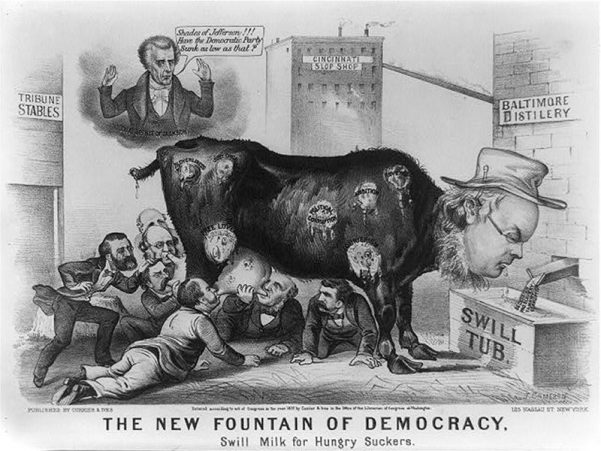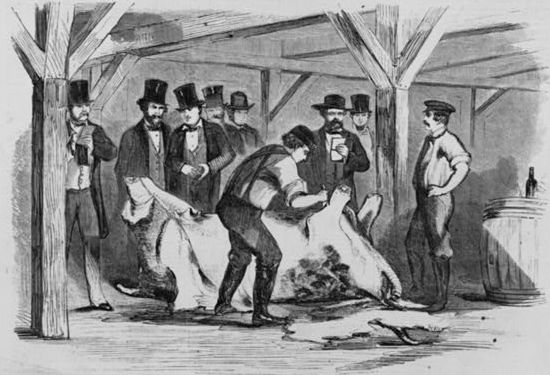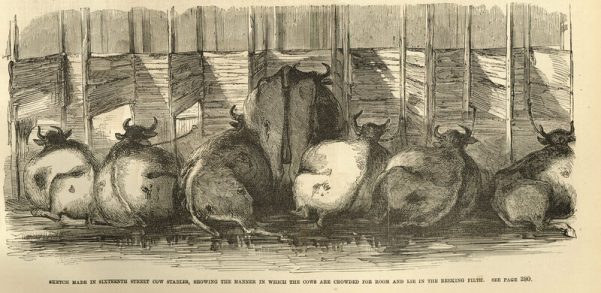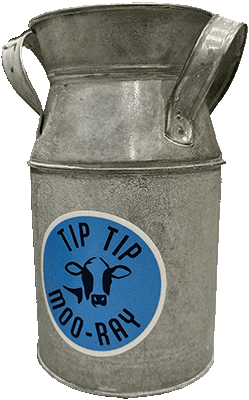Most people have no exposure to raw milk. Modern perceptions around raw milk are crafted by corporate media and revolving-door careerists. However, there were real-world experiences that prompted the rise of pasteurization mandates.
Pandemic blamed on raw milk
This idea of dangerous milk never crossed our ancestors’ minds. Raw milk has long been revered as a life-giving, healing food. Some elevated milk religiously and saw dairy foods as a gift from God and Nature, or however they chose to narrate it. In fact most of that milk wasn’t just raw, it was unrefrigerated and often fermented. So what went wrong?
You’ll hear the higher tier of those who oppose raw milk reference an outbreak in the 19th century where a many people became deathly ill after drinking raw milk. It’s true, this era occurred. People got sick by the thousands including many children.
That’s not the whole story though, there was something else going on around that period of history that might give us a better perspective on the situation.
Swill Milk – big business does raw milk

As people left their family-owned farms and acreage for the cities, ie urbanization, a new market emerged. Now there were more densely-populated markets to provide for, where mass amounts of milk needed to be supplied. Big business readily took to this emerging market.
Many concentrated farming operations were born to capitalize on this opportunity. Collaboration being older than business itself, some of these milk farmers began feeding their cows spent grains from alcohol distilleries, virtually eliminating feed costs.
Spent brewing grains, especially in bulk, are a long deviation from the animal’s natural diet and had a negative effect on their health. This reduced the quality of their milk, horrifically. The resulting milk was blueish in color and transparent compared to the butter-yellowed white milk produced by healthy cows, this blueish low quality milk became known as “swill milk.”
Adding insult to injury, the people in charge of these operations decided to cover up the visual indicators of their poor milk quality instead of making it right. They did this by adding gypsum powder (plaster of Paris, basically chalk) to whiten the milk, starch and eggs to thicken it up, and molasses to replace what would’ve been the buttery hue.
“Raw milk” and child mortality

From Smithsonian Magazine, on Frank Leslie’s Illustrated Newspaper‘s swill milk exposé published in 1858:
Sold by firms hoping to maximize their profits, so-called “swill milk” came from dairy cows that were fed the steaming remains of grain distillation. These cows lived in nearby stables amid miserable conditions–most only survived for a few months–and produced a sickly, bluish milk. To mask this ghastly color, the distilleries added chalk, eggs, flour, water, molasses, and other substances. Local distributors then purchased this toxic concoction from the distilleries and brazenly marketed it as “Pure Country Milk.”
…
In subsequent reporting, Leslie’s alleged that “the deaths of two-thirds of the children in New York and Brooklyn could be distinctly traced to the use of impure milk” and the normally restrained New York Times wondered how “the 8,000 children that died last year from the poison of swill milk” could not spur public health officials and local leaders into action.It soon became clear that New York wasn’t the only city with problems: Thousands of children from Boston to Chicago to San Francisco died each year from the contaminated swill. Public outcry from these revelations eventually led many distilleries to close their deleterious dairies, or, at the very least, clean up their operations.
… wait for it …
The milk question grew to such dire proportions that it even attracted the attention of President Theodore Roosevelt. In 1908, his Surgeon General released a 600-page report that attributed most childhood deaths to impure milk and argued that pasteurization was the best way to address the ongoing public health crisis.
It should go without saying, pasteurizing milk won’t save you from the consequences of taking in substances like chalk added to milk. Pasteurization is supposed to be a solution to destroy microbes, but it won’t transmute gypsum powder into something that’s healthy to eat.
In a brilliant side-step by big business and the establishment, the blame was shifted away from this unreal concoction onto raw milk using the latest in scapegoating tech: germ theory.
Big misunderstanding, a profitable one

The public’s trust in store bought milk was damaged, public outcry emerged for the government to do something to protect them from dangerous milk. When they did, the concerns about milk safety didn’t go away overnight.
To this day, the stigma is still present. If you go to the doctor in the middle of an e. coli poop-lettuce outbreak and they find out you’ve been drinking raw milk, your doctor is will at least feel an urge to blame the raw milk.
Back then, the fear of store-bought milk was still heightened, and this fear was leveraged to the advantage of big business. It was very easy for the establishment to say, “well, maybe it wasn’t the chalk, maybe it was germs!”
Pasteurization was developed around the same time, in 1864 by Louis Pasteur, originally adopted by the wine industry to extend their product’s shelf life. They were able to convince the concerned public that milk mass-pasteurization was a necessity to combat pathogenic illness. From there, laws against raw milk sales were introduced and milk pasteurization became a requirement.
Big milk producers initially resisted but soon saw benefit, due not only to shelf life. While they possessed the means to build out pasteurization infrastructure, some of their smaller competition did not. The rise of pasteurization also created a collage of food processing companies who by their nature have an interest in mass-pasteurization laws. Through those laws they exist and perpetuate their power over farmers, bottle-necking the system, so it’s a fight they’ll never give up.

Over time the portion of urbanized people who have ever tasted raw milk has dwindled, and the establishment’s education system has crystallized these fears in most people.
History being written by the victors, the raw-ness of raw milk eventually became the scapegoat for this swill milk disaster.
Update 2024: Noticed this video elaborating on the history of the swill milk scandal.




